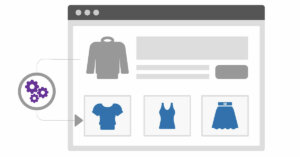The Risks of Shadow IT and How to Avoid Them
By Gilad Maayan
April 8, 2019
Share
This brief guide introduces you to Shadow IT, explains some of the common risks involved, and offers advice on how you may mitigate them.

What Is Shadow IT?
Shadow IT is an IT system or technology used without the knowledge or approval of an organization. This can include personal devices like cell phones and USB devices or the use of unapproved SaaS products and cloud services. Even IT personnel who work for your company, but have not been registered in your corporate system, can be considered a form of shadow IT.
There are various reasons an employee might use unapproved IT solutions, but the most common motive is the inadequacy of the organization’s approved solutions. For example, the corporate IT infrastructure might be slow or incapable of meeting business needs. This problem is compounded by the fact that regular users are often unaware of the risks of shadow IT.
Something that complicates the matter is that new technologies associated with shadow IT can be beneficial to a company’s operations. A shadow IT solution might offer you greater efficiency or flexibility so you can apply changes quickly, but this comes at the expense of the company’s IT oversight and makes it harder to ensure security.
5 Common Risks and How You Can Avoid Them
1. Visibility:
The main cybersecurity risk associated with shadow IT is lack of visibility, which prevents the IT department from having control over the network. You can’t effectively manage a resource if you don’t know it exists. Lack of visibility enables vulnerabilities to go undetected, and you can’t fix them. This provides a window for hackers to exploit and steal sensitive information.
To ensure that nothing slips under the radar, you should monitor your network and any cloud service your company uses. This allows you to discover new and unknown devices and software that are being used within your corporate infrastructure. You can use shadow IT discovery tools and analyze the log data from your firewalls to detect traffic coming in or out of your network.
2. Compliance:
Lack of accountability is a major drawback of shadow IT. Many organizations are obligated to comply with industry standards and regulations like the General Data Protection Regulation (GDPR). Regulated industries require stringent control over the IT environment, and non-compliance can result in fines and damage the reputation of your business.
One way to mitigate this risk is to build a well-thought-out corporate policy addressing the most critical business issues in your organization. The policy should include effective and comprehensible guidelines for the use of third-party applications, cloud services, and personal devices and the use of.
To prevent unauthorized access to your network and minimize the risk of data leaks, you can set up a mechanism to ensure that employees secure approval of the IT department before they exchange data between internal networks and cloud products. The approval process should be fast so your employees can continue working sooner. Alternatively, you can simply restrict all access to third-party applications.
3. Data Loss:
If you process critical data using unapproved software, it is at greater risk of being lost. Shadow IT is not connected to the organization’s recovery plan, and it is likely that shadow IT applications are not properly backed up. If something happens and the data is damaged or lost, you might not be able to restore it.
The surest way to prevent data loss is to create a system of redundancy and backups, but your IT department cannot back up software that is invisible. To help combat the use of shadow IT, you should consider adopting a secure cloud environment that will offer your employees the flexibility they need.
Cloud services allow you to protect your data by ensuring that it is backed up. For example, when using the AWS cloud, you can back up each version as an EBS snapshot. Cloud providers also offer tools to help you discover unknown apps that are connected to your system.
You can use a cloud access security broker (CASB) to help you detect and manage shadow IT. CASBs analyze logs from firewalls, proxies, and endpoints to identify any cloud services or applications being used. You can also restrict access to SaaS applications through a read-only mode that doesn’t let users publish data to them.
4. Efficiency
While shadow IT tools can be more convenient and efficient for specific use cases, a large amount of shadow IT infrastructure can impact the overall functionality of an organization’s network. Furthermore, it requires greater effort to administer and manage shadow IT, and performance can suffer as a result of the incompatibility of IT components.
The obvious response to the inconsistency and inefficiency of the overall shadow IT presence is to educate your employees and give them the tools they need. Apart from raising awareness of the dangers of unapproved software, education is important for ensuring that your employees know how to use approved resources.
On the other hand, the main reason employees turn to shadow IT in the first place is because the approved tools are ineffective or less comfortable to use, so it is important to update and expand your IT infrastructure to accommodate the needs of your employees. You should provide a continuously expanded list of approved services and applications and ensure that this list is visible so that employees know which resources they are permitted to use.
To help expand the list of approved tools, and to prevent your employees from resorting to unapproved tools, you should encourage open communication so you can learn what your employees need. Allow them to test new services so the IT department can assess the risks.
5. Exposure to Cyber Threats
When employees use unauthorized third-party or SaaS applications, they unwittingly expose your system to IT security threats like malware. The typical response to this risk is the use of firewalls.
You can also use a zero-trust model to help verify any user or device trying to connect to your system. This model assumes the existence of threats within your network and isn’t limited to perimeter security. This offers you greater control over who can access your system because even internal users have to be verified and authenticated.
Conclusion
Shadow IT is often the result of good intentions but can put your organization at risk. To mitigate this risk, you need to keep track of your employees’ behavior and ensure that all software or hardware components are carefully inspected before you introduce them into your network.
To learn more about SiteSpect, visit our website.
Share
Suggested Posts
Subscribe to our blog:





